- identify the 5 [ Quad-Type Structures ] in [ orange / magenta / dark-green / cyan / purple colors ] ,
- in the set of 15 diagrams to follow , below .



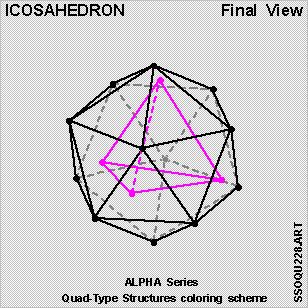

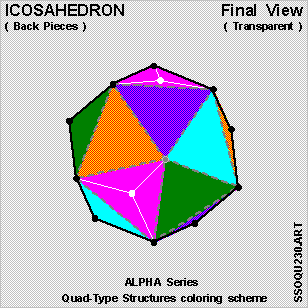
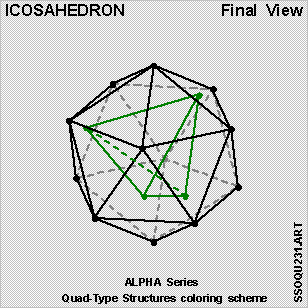
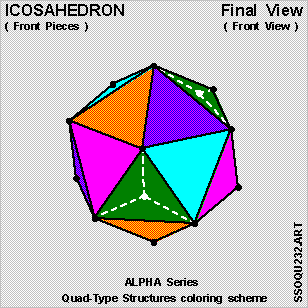
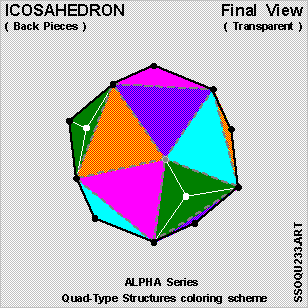
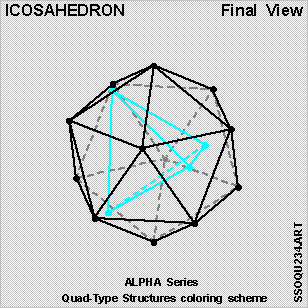





Essentially , each [ Quad-Type Structure ] is in-itself-and-by-itself [ quad-symmetric ] in nature .
so that :
we would end-up with a 20-Piece Icosahedron in the said-[ 5-colors ] .
And this [ Coloring Scheme ] here for the resultant 5-Colors Icosahedron :
for identification purposes .
so that :
we would end-up with a 20-Piece Icosahedron in the said-[ 5-colors ] .
And this [ Coloring Scheme ] here for the resultant 5-Colors Icosahedron :
for identification purposes .















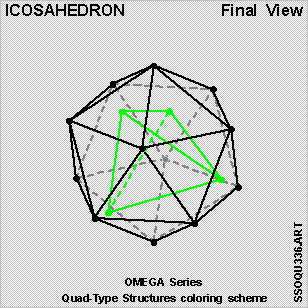
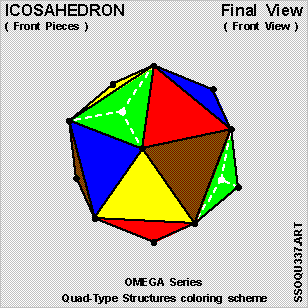


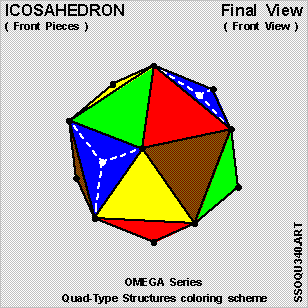

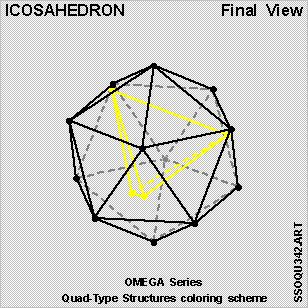

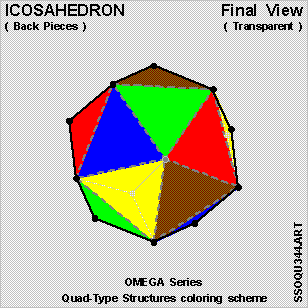





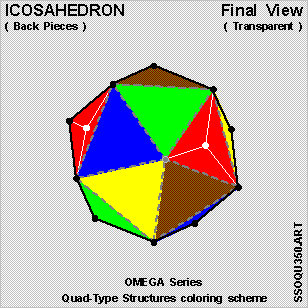

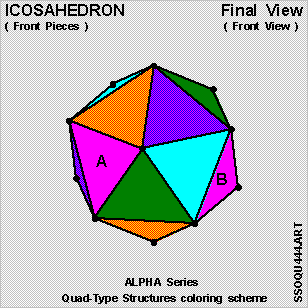

And we have marked-off the 4 [ magenta-color pieces ] as [ Piece A ] , [ Piece B ] , [ Piece C ] and [ Piece D ] respectively ,
STATEMENT I :
STATEMENT II :
STATEMENT III :
STATEMENT IV :
And as such , the 4 [ pieces ] together do always form a [ quad-symmetric structure ] .

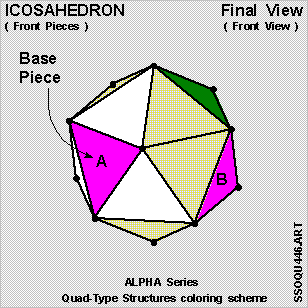










we can now come to the conclusion that :
i.e. :
And the direct consequence of this is that :
Very simply :
the resultant [ strutcture ] may not necessarily be [ quad-symmetric ] in nature !
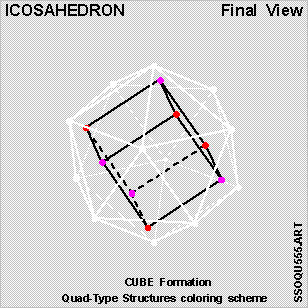


| Tetrahedron fromthe ALPHA Series |
Tetrahedronfromthe OMEGA Series | |
|---|---|---|
| *********** | ************************* | ************************* |
| 1st Cube | Orange Color Tetrahedron | Brown Color Tetrahedron |
| 2nd Cube | Magenta Color Tetrahedron | Red Color Tetrahedron |
| 3rd Cube | Dark-Green Color Tetrahedron | Light-Green Color Tetrahedron |
| 4th Cube | Cyan Color Tetrahedron | Blue Color Tetrahedron |
| 5th Cube | Purple Color Tetrahedron | Yellow Color Tetrahedron |
the 2 types of [ Quad-Type Structures ] are in fact different .
The finer difference here being that :